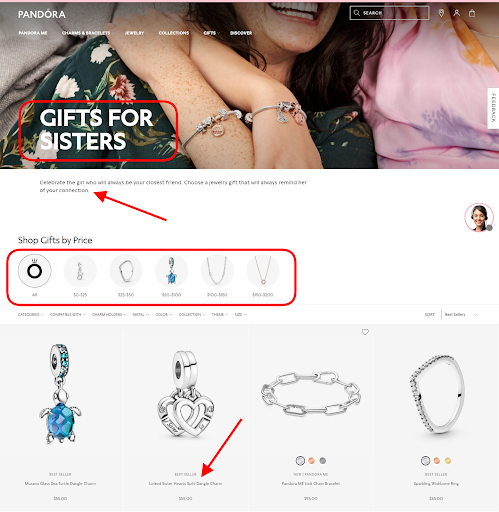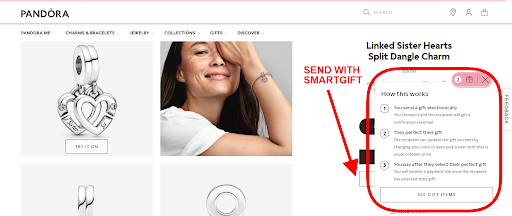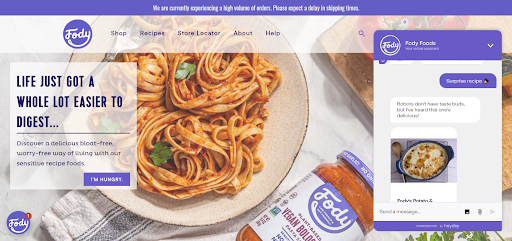How will a business owner increase their audience and retain customers in 2023? Savvy online merchants should know what’s going on in the market. Many trends wander from year to year; some of them firmly settle in our lives; others pass.
The most important thing in 2023 is to focus on customer experience and form solid relationships with clients. After all, loyal customers attract their friends to the company.
As for customer experience, you can improve site navigation, set up an eCommerce site search, or provide omnichannel support. Every endeavor matters. So what features should you introduce to your business? Let’s look at four predominant marketing trends I anticipate in 2023 and beyond.
RELATED: Easy Marketing Boosts for Brands
4 Leading Trends That Will Shape Marketing in 2023
1. Gift Guides as an Inbound Marketing Strategy
Inbound marketing is all about providing users with valuable content. Unlike direct advertising or other similar strategies, a content marketing strategy that answers customers’ needs can bring engagement and conversions.
One of the ways a brand can share expertise is by creating gift finder sections. Such selections are pretty handy as shoppers often need assistance in searching for presents.
I chose Pandora as an example as this online store has a convenient menu section devoted to gifts. We can see items broken down by recipient, occasion, and even price.

Screenshot taken on Pandora
It’s a powerful approach as it allows shoppers to save their time cluelessly browsing a product catalog. Instead, a separate page devoted to gifts for sisters, partners, moms, and others can be an excellent place for finding a suitable present. Just look at the screenshot below.


Screenshot taken on Pandora
Furthermore, I believe that Pandora’s “Send with Smartgift” option is a powerful marketing tactic too. On the product page, we can see that clients are given the opportunity to send an electronic gift. The recipient can then modify the order.
Why is this reasonable? The person buying the gift can mix up sizes or select something the recipient won’t find to their liking. Thus, instead of putting your buyers through the trouble of time-consuming returns, you safeguard the chances of customer satisfaction and keep your buyers in the funnel.


Screenshot taken on Pandora
It’s just one of the many ways brands can use inbound marketing to their benefit.
2. Masks and Filters as Virtual Try-On
Businesses strive to generate positive emotions for prospects and look for innovative ways to streamline shopping. That’s why they employ social media.
Social media do their best to make communication between brands and customers as comfortable and interactive as possible. One of the ways to ensure it is augmented reality. For instance, on Instagram, it looks like masks and filters you can apply to your Stories and posts. Such effects create the feeling of a different environment, can change your hair color, apply extraordinary makeup, and so forth.
Snapchat was the social media pioneer to provide it. Initially, this phenomenon was perceived ambiguously, but it’s a powerful marketing tool now. Marketers noticed the popularity of such solutions and began applying them to the campaigns.
Don’t miss this example from the L’Oréal Paris official Instagram account. These virtual try-on masks let users test various lipstick shades or mascara.


Screenshot taken on the official Loreal Paris Instagram account
Doesn’t it remind you of virtual try-on on eCommerce websites? Augmented and virtual reality on social media has the same purpose, but in this case, a potential customer doesn’t have to browse the pages on a store’s website. They can see how the product will look on them directly on the social media app.
It can increase conversion, recognition, and consumer trust, as it has the effect of surprise, novelty, and uncommonness. And the best part, it’s easy to implement.
3. Marketing Automation
How can we prepare for tomorrow? One of the trends I see developing at full steam is marketing automation.
Marketing specialists process terabytes of client data. But there’s a way to remove repetitive and manual tasks, which is marketing automation. It allows leveraging tools to facilitate the workflow and improve accuracy.
One of such solutions is Salesforce and its Marketing Cloud, using which you can:
- integrate data;
- evaluate advertising campaigns;
- set up automated email send-outs;
- personalize communication with clients;
- among other things.


Screenshot taken on the official Salesforce YouTube channel
As a result, you can implement omnichannel strategies, get the most of your marketing efforts, and boost your customer service.
4. Conversational Marketing
Customer interactions become faster, and buyers aren’t ready to wait hours for a response. Client data grows, just as the need for simultaneous support throughout various channels.
How will an eCommerce business cope with it? Hire more employees? Increase the number of shifts? Conversational marketing lets brands react to customers’ demands instantly. To a greater extent, we are talking about chatbots here.
Legacy chatbots’ responses don’t differ much. “Yes”, “no”, “this”, or “that”. It’s like talking to an automatic system (which it is). But conversational artificial intelligence takes chatbots to the next level.
It combines the most recent advances, such as natural language processing, machine learning, and sentiment analysis. These components work together to provide responsive chatbots, working non-stop. They tackle customer problems without human intervention. And it’s hard to distinguish between support specialists and robots.
They self-learn, upgrading with time and giving the most precise answer. At the same time, human agents focus on other tasks, such as customer acquisition or drafting a strategy.
One such example is the AI-powered chatbot on the Fody Foods website. It doesn’t just convey order details but also gives recipes while sustaining a conversational and light tone.


Screenshot taken on the official Fody Foods website
Final Thoughts
Do you see how the boldest predictions become everyday reality? Artificial intelligence is no longer the main villain in films. It’s an invisible assistant, making sales, HR, marketing, and other specialists’ lives more manageable. Just like automation, it helps to grow the customer base and eases mundane tasks.
Currently, the main focus of many companies is improving customer experience. What are the trends of 2023 in this regard?
- Provide help with choosing gifts.
- Communicate with customers via chatbots to offer an uninterrupted experience.
- Don’t forget about technological advancements, such as marketing automation.
- Harness the power of social media and its capabilities, such as live streaming and augmented reality.
Follow / Subscribe:


Related posts


Learn More ›
Latest Articles
Subscribe to Newsletter
- DTC marketing news and trends—tracking the industry ups and downs Source: Ad Age-Latest Published on 2023-09-25
- Hollywood Screenwriters reach tentative deal to end strike Source: Ad Age-Latest Published on 2023-09-25
- Hollywood Screenwriters reach tentative deal to end five-month strike Source: Ad Age-Latest Published on 2023-09-25
- What Gen Z loves—and hates—about brand marketing Source: Ad Age-Latest Published on 2023-09-25



Stay connected